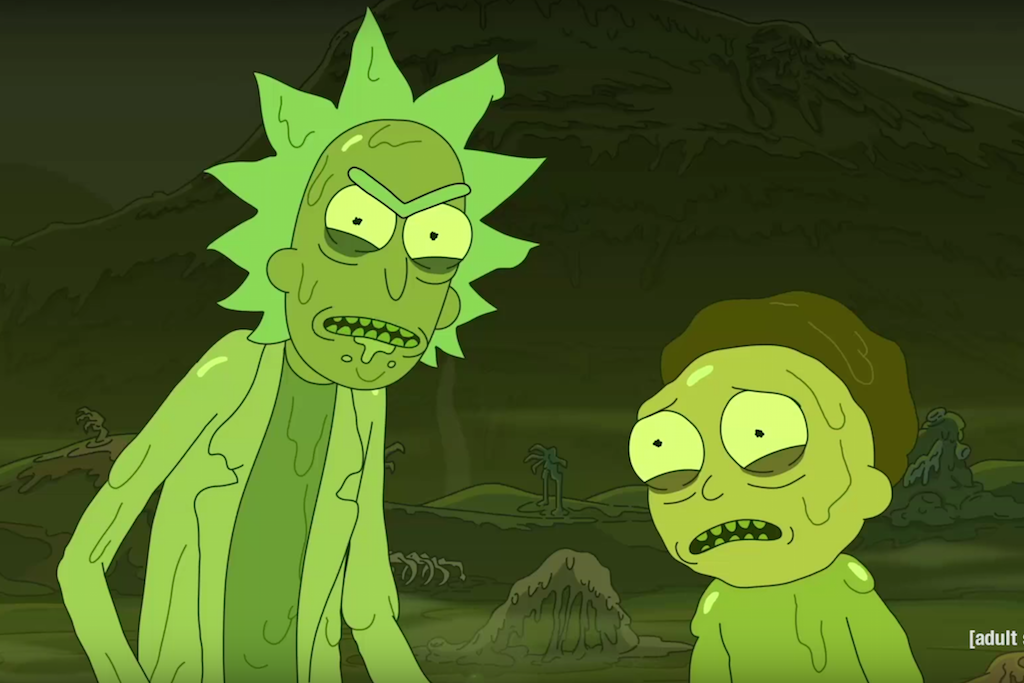‘Ready Player One’ Is A Pop Culture Thirst Trap And It’s Fucking Painful
For Ready Player One it’s game over, man.

In the era of nonstop spin-offs, adaptations and crossovers, there’s no contentment in appreciating something for what it is. Pop culture demands each new creation must be reformatted, expanded and franchised — comics become movies, movies become videogames, videogames become TV shows.
Ready Player One, 2018’s latest big budget release, tries to cram all of pop culture’s biggest moments into one unwieldy blockbuster. None of this comes as a surprise because the novel, written by Ernest Cline, shamelessly stands on the shoulders of 1980s pop culture and admires it from above. The promotion for the film followed suit when it released widely-ridiculed posters that repurposed cult classics like The Matrix, Beetlejuice and Blade Runner.
The film — directed by Steven Spielberg — is set in the year 2045, when the world is on the brink of collapse due to overpopulation. Instead of fixing real world woes people escape to a virtual reality world called OASIS, created by tech entrepreneur James Halliday. When Halliday dies he reveals that ‘easter eggs’ are hidden in OASIS. The first person to find all the eggs will inherit a trillion-dollar fortune and full control of Halliday’s creation.
The challenge lays dormant for five years until a player, Wade Watts, solves the first puzzle and the race intensifies. Watts must solve the remaining clues while battling the IOI Corporation (led by our own Ben Mendelsohn), who are using their resources to win the contest to boost their profits.
But, just as many suspected, Ready Player One doesn’t quite work.
Referencing For The Sake Of Referencing
The problem is that Ready Player One is a nostalgic thirst trap with no reverence for the pop culture moments it deploys haphazardly.
Spielberg makes nods to the DeLorean from Back to the Future or the T-Rex from Jurassic Park, but they feel hollow and never elevate the film past its sideshow attraction vibe. There’s a sequence where Watts enters The Shining, walking the through an eerily accurate digital recreation of the film, and it’s like desecrating a grave site. Turning the Kubrick classic into a gimmick is evidence of the arbitrary way Ready Player One approaches pop culture — it’s non-stop referencing for the sake of referencing.
The concept of fandom also features in the film, but not with the intelligence you’d hope for. Wade is constantly explaining why a piece of pop culture matters, but never gets to the heart of why it means something to him — nobody ever does.
Instead, Ready Player One highlights the worst parts of fan culture — there’s even a pop culture research wing of IOI Corp, complete with matching preppy uniforms, where know-it-all geeks yell knowledge at each other in service of the quest to be the biggest fan. It’s frightening to hear characters in the film own “fanboy” as a badge of honour in the wake of #GamerGate, the hate for an all-female Ghostbusters and the Rick and Morty sauce fiasco.
But Ready Player One knows its target audience and rolls with fanboy logic. There’s a scene where Wade meets the avatar he has a crush on in the real world and it’s a cringe-inducing male fantasy that comes across as the dramatisation of lyrics from a John Mayer song.
Ready Player One presents a world where you can be anyone or anything in OASIS, but it leans hard into a male point of view on romance — one where Wade is the centre of the universe.

Ready Player One‘s Missed Opportunity
There are hints at how the combination of technology and nostalgia can be a dangerous cocktail, but Ready Player One never has the guts to show how dark the world is in 2045.
There are brief moments that show the world outside OASIS disintegrating while people are addicted to what’s happening in the lives of their avatars. In one montage, Spielberg shows what each player looks like in the real world while in battle — a kid is shown hassling his mother to quit OASIS while a fire in the kitchen begins to blaze, but she pushes him away.
It’s disappointing the film doesn’t explore this further, given Spielberg excelled at showing shadows creeping across American life in his previous blockbusters War of the Worlds, Close Encounters of the Third Kind and Jaws. The best argument Ready Player One can conjure is that reality is better than virtual reality, but in moderation — like those minuscule warnings about alcoholism on beer bottles.
You can practically hear Spielberg yell “BAZINGA!” with Ready Player One, a woeful greatest hits package that treats pop culture like a competition. Fanboys are heroes, movies only matter if you know more than anyone else about them, and it’s hip to be square.
For Ready Player One it’s game over, man.
—
Cameron Williams is a writer and film critic based in Melbourne who occasionally blabs about movies on ABC radio. He has a slight Twitter addiction: @MrCamW.
